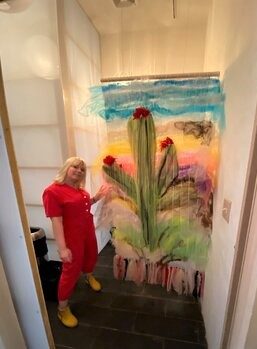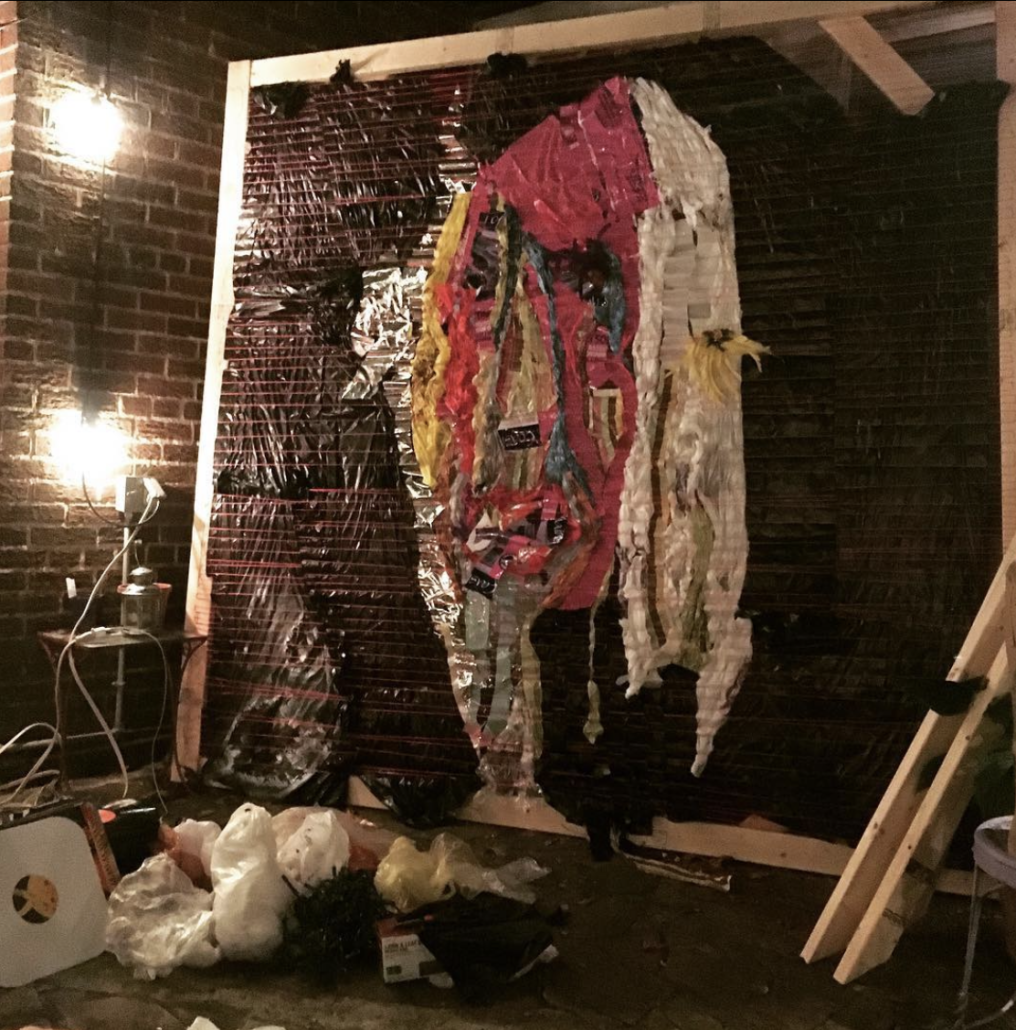Roots forward: Janel Leppin
Looking for the Crossroads Number 9

The first of my Scots-Irish ancestors to board a boat for the new land listed his occupation as Weaver on the ship’s manifest (nowhere is it documented whether he owned a fiddle.) But weaving was already here. Native American communities make culture and history available in the stories of baskets and blankets. Africans who were brought unwilling to our shores adapted their traditions to the Carolina sweetgrass.
Please remember that Folk is a mindset. It’s not a lack of refinement but distillation, preserving the threads between earth and fruit. Knowing how to read mixed metaphors and find the stories we cannot say in plain words. Keeping those stories alive, feeding and clothing our children with them. Music is a powerful vehicle, but Folk is much more than that. FolkWorks explores roots with articles like this one by Judy Maddox with Mimi Loutrell: Fiber Arts Festival.
Janel Leppin’s music is informed, erudite, exploratory. You may have to listen carefully to find her folk heartbeat there. If you’d rather not, though, she’s laid it bare in visual art with a time-honored tradition: weaving.
Janel’s family history is deeply rooted in Virginia. She’s a third-generation artist and international touring musician. In my usual way, I came to know of Janel & her cello through the wrong entrance, in this case through the attic. Through the front door one Thanksgiving: she was sweet and quiet like sun sneaking through a window-crack, interested in everything. I once came upon her on the front porch, weaving wreaths with her mother. But I first heard Janel recently at Creative Cauldron, where she and her husband Anthony Pirog performed for an intimate audience. I have never seen a cello attacked with both hands like Janel played Big Sur. Janel is also the bandleader for Ensemble Volcanic Ash, a modern chamber jazz ensemble. My favorite track: Woven Forest – She Had Synesthesia.
I became especially captivated with Janel’s woven portraits, made from recycled wood & weft, woven through with fabric & things that speak to her. They’re massive – taller than she is.

Untitled – weaving by Janel Leppin
me: What does the historical aspect of weaving mean to you?
JL: Traditional weaving practices are something that I have a deep respect for. I did not learn weaving from a book or from a person. It was very intuitive. I started out after seeing a work at a store and becoming completely obsessed with how they made the frame. I then made what I use as a loom for most of my work based on that.
My grandparents are artists and liked what I was doing with my art, so when they found a floor loom at an auction for cheap they picked it up and put it in their garage, hoping that someday I would have room for it.
Learning how to weave on my floor loom has been informing my work in terms of structure but that’s quite recent. My early works are mainly by feel.
me: How do you choose which portraits you want to create?
JL: My first portrait was a copy of the self-portrait of Egon Schiele, Portrait with Physalis. I did it in one day. My favorite way to work is fast like that but I get stuck often enough that it’s been a bit rare recently.
Woman is a self-portrait made out of trash and that one came together quickly. I made it when the hearings against Brett Kavanaugh were occurring and it helped me process seeing a blubbering man-baby cry while a woman sought accountability for his past wrongdoings.
It was a strong feeling and I followed it, no mirrors, no pictures. I didn’t even consider it a self portrait until stepping back and thinking later, yeah that’s me. It was torn down by a drunken man at an out of hand show right before Covid. Apt!
- Egon Schiele, Portrait with Physalis
- Curandera, for Susan Alcorn (The Heart Sutra record cover)
- Garden Party (Record Cover artwork)
- Woman (self-portrait)
People who are powerful musicians and/or activists inspire me a lot. I also tend to lean toward portraits of people who are alive because I have an aversion to people seeing the importance in musicians or artists work only after they are gone. I have done portraits of my teacher and friend Susan Alcorn, a pedal steel player living in Baltimore, MD; Brass Arrow, an indigenous artist living in Philadelphia, Anthony Pirog, a D.C. based guitar player (and my husband.) I did portraits of the members of my band Ensemble Volcanic Ash for my album artwork as well. I do a lot of record covers for bands.
me: You’re interested in recycling materials as part of your process. Could you explain?
JL: Yes, I am a composer, cellist, vocalist and multi-instrumentalist by trade. My job requires that I have cool clothes. It also requires that I drag heavy amps and keyboards around to gigs so I had all of these gorgeous vintage psychedelic clothes that had holes or I wore them out completely. I couldn’t bear to throw them out and started to think I’d love to put them on my wall. The other aspect of this is I love how each piece has memories woven into them just like with a quilt. It’s an important part of my work when I do commissions for people. I like to weave in fabric that has their memories attached.

Alice – for Alice Coltrane
Me: I know you’ve performed music in the same space where your art was displayed – how did that come about, and where? Does it happen often? Do you want to do it again in the future?
JL: For me it was an easy way to get an art show going. I’ve been playing for 34 years and so I know the club owners in my city and they are game for my ideas. My first was in 2017 at the 9:30 Club. It was a solo show where I was opening for a band and so I put a huge weaving in the middle of the stage still on my loom. I had my band play at the end of the set so I could weave live onstage for a bit. I was wearing a big vintage blue and silver Japanese robe — the reward for a raffle I put together raising money for Casa Ruby (housing for LGBTQIA youth & other community service in D.C.) I took scissors to the robe and wove it in to finish the piece. It was one big performance piece.
I had a second show at the Black Cat in 2018 and asked all of my friends to play in front of the artwork. There were 18 pieces and 18 soloists or bands playing in front of each one individually over the night. I set them up scattered around the club onstage and off so the crowd would migrate from one side of the club to the other depending on who was playing. It was a special night and a TON of work. I think it was memorable for everyone. One piece is still there actually!
The most recent show was at Comet Ping Pong where I put together several groups including my music students and we utilized the whole restaurant for the show. Some of my work is still hanging up there.
I love to show my work in clubs but I am looking forward to showing my work in an art gallery in McLean Project for the Arts in Winter 2023. It’s a solo show and I’m sure I’ll put together some music for it as well.
You can find Janel Leppin on Instagram @janelleppin, but definitely look for her on Bandcamp First Fridays
Roots forward: Janel Leppin
Looking for the Crossroads Number 9

 Janel Leppin
Janel Leppin














